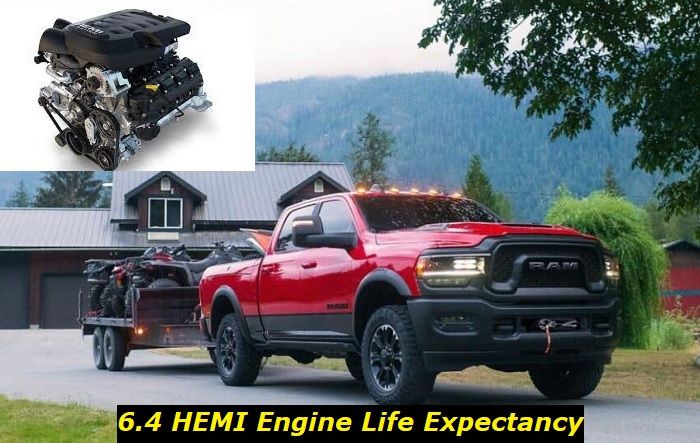Living by its mantra "The best or nothing", the three-pointed star signifies more than just a Mercedes-Benz. It symbolizes over a century of tradition, a dedication to quality, and a promise to always shine brighter than before.
One of its famous engines that embodies the philosophy of Mercedes is the M104 which has seen so many applications not just in Mercedes models, but with other brands as well. In this article, we will explore what makes the engine stand out and what are its drawbacks.
.jpg)
Key features and my opinion about the engine
- Production years:1989-1998
- Average lifespan of M104:330,000-360,000 miles
- Fuel supply type:port injection
- Power range:193-230 hp
- Fuel efficiency:bad
- Engine block material:cast-iron
- Engine reliability score:high
- The most common problems:various oil leaks, cooling fan problems, engine is afraid of any overheating, wiring and connections problems.
Key Specs of the Mercedes M104 Engine
The M104 engine series was first introduced by Mercedes in 1989, and it remained in production for the next 10 years until it was ditched in favor of the M112. Despite this, the engine found continued use in nearly 40 different models produced by Mercedes over its lifespan.
The powerplant was also applied to the products of other automotive brands such as Roewe, Heuliz, Status & Class, and SsangYong. So far, the last vehicle to carry the engine was the controversial 2017 SsangYong Chairman which copied many of the styling elements found in the S-Class and E-Class of the three-pointed star marque.
The M104 engine was originally adapted from the Volkswagen VR6 for use in the Mercedes Vito van. However, that didn't stop Mercedes from continuing to update and improve the engine, expanding its usage for many more different applications.
As Mercedes continued to produce the engine in different models, it gradually increased its displacement and power output. The AMG conversions were the last to be produced. All of these engines have a straight-six configuration, except for the original Volkswagen VR6 adapted by the Vito van.
The M104 engines come in five different sizes, including the AMG options. The Mercedes M104 can be found in 2.8L, 3.0L, 3.2L, and 3.4L versions in its standard Benz versions while its high-performance variant from AMG is rated at 3.6L.
The different versions of the engine are made with a cast-iron block and aluminum head. Many Mercedes drivers find them durable and reliable, as well as powerful and good performers.
Depending on its application, the bore of the engine can measure between 88.5 mm and 91.5 mm, and its stroke comes in sizes between 73.5 mm and 92.4 mm. Meanwhile, its compression ratio lies between 9.2:1 and 10.5:1 for its standard Benz and high-performance AMG models.
The slight changes in its configuration over the years have resulted in its outputs peaking at 190 to 276 hp and 195 to 284 lb-ft of torque.
Longevity of the Mercedes M104 Engine
The Mercedes M104 engine can be quite reliable if you maintain it well. Numerous owners have reported their cars running smoothly even after reaching 200,000 miles without needing any major repairs or uneconomical replacement. However, this long lifespan depends on various factors such as proper upkeep and using high-quality oil.
Just like any other engine, the M104 has a few design flaws. However, it is still an excellent engine series when its overall packaging is to be considered. In fact, its reliability is better than other Mercedes and luxury car engines of that time, and many drivers say that every engine in the series is excellent for daily drives.
Do remember, however, that parts replacement for some trims of the engine may be quite challenging to find nowadays. The units that are particularly scarce are the 3.4L and the 3.6L variants.
Most Common Problems of the Mercedes M104 Engine
The Mercedes M104 is a dependable engine, but it possesses some design flaws that can lead to serious problems. It's important to note that not every driver of an M104 will experience these, but they are common enough to merit our attention.
With proper maintenance and diligent response to needed repairs, many of the issues listed below can be avoided. Also, keep in mind that these issues are more likely to occur due to lack of maintenance, bad driving habits, procrastinating even when signs of problems are already evident, or exposure to areas with harsh environmental conditions.
With those things out of the way, here are some of the problems often occurring in the Mercedes M104 engine that you should keep a lookout for:
1. Overheating
There are a few possible causes of the overheating issue in the M104. One is a coolant leak. Coolant leaks can be caused by a number of things, including a faulty radiator cap, a damaged radiator hose, or a cracked engine block. Another possible cause of overheating is a failing water pump. The water pump aids in circulating coolant throughout the engine. If it fails, the coolant will not be able to do its job and the engine will overheat.
There are a few possible solutions to the overheating problem. One is to replace the radiator cap. Another is to replace the radiator hose. If the water pump is failing, it will need to be replaced. Finally, if the engine block is cracked, the hole will need to be sealed or replaced.
Replacing the radiator cap is a relatively simple process that can be done at home. Replacing the radiator hose is a bit more complicated, but it can also be done at home with the help of a repair manual. Changing the water pump is a more difficult task that should be performed by a qualified mechanic. Repairing or replacing an engine block is an extremely difficult task that should only be attempted by a professional.
2. Mass Airflow Sensor Malfunction
The mass airflow sensor (MAS) is a key component of the Mercedes M104 engine. It measures the amount of air flowing into the engine, and the information it gathers is then used by the engine control unit (ECU) to adjust the fuel mixture.
If the MAS fails, it can cause several problems. The most common symptom is a loss of power. The engine may also run lean or rich and may stall or misfire.
There are several possible causes of MAS malfunction. The most common is the contamination of the sensor by elements. This can be caused by oil, dirt, or water entering the air ducts. Another common cause is a damaged or worn internal component.
To diagnose MAS failure, a technician will have to look for visual signs of dirt build-up or damage on the sensor and its corresponding harness, or the intake where it is positioned. Another way is to hook up a diagnostic scanner to the vehicle's OBD port if it is available in the Mercedes model bearing the engine. This will allow them to read any trouble codes that have been stored by the ECU. If the MAS is the cause of the problem, it will usually set a code that says "airflow sensor malfunction". Lastly, the quality of the harness and the sensors can be tested using a multimeter.
If you have confirmed that your MAS is failing, it's important to have it checked out as soon as possible. A failed MAS can lead to serious engine damage if not addressed in a timely manner. In some cases, it may be necessary to replace the entire MAS assembly. Fortunately, this is typically a fairly straightforward repair. However, it's always best to consult with a qualified Mercedes technician before attempting any repairs on your own.
3. Leaks
Mercedes M104 engine leaks can be frustrating and difficult to diagnose. Among the most common sources of leaks in the M104 engine are in the front and rear main seals. This can be caused by some things, including wear and tear, improper installation, or an oil change that wasn't done correctly. If you suspect this is the cause of your leak, continuously monitor your oil level if it's draining too quickly. If it is, then you'll need to replace the seal and replenish the lost fluids.
Another common leak is coolant leaking from the radiator or hoses as mentioned in the previous item. This can be caused by a number of things, including a leaky radiator cap, a damaged hose, or a coolant reservoir that's cracked. To fix this, you'll need to replace the radiator cap and hose. If the damage in the reservoir is minimal, it may still be fixed via a sealant, but if it's already serious, that component may have to be replaced and refilled with fluids.
If you have a water leak, it's likely coming from the water pump. This is usually caused by a faulty gasket or seal and can be fixed by replacing the faulty part.
Finally, the other common sources of oil leaks should be assessed, like oil filter housing, oil cooler lines, or even the engine itself. If you suspect an oil leak, check all of these areas for leaks first. Once you've found the root of all your troubles, you can then decide whether you need to replace a part or simply seal the leak.
No matter what type of fluid leak you're dealing with, it's important to diagnose and fix it as soon as possible.
Should You Get One?
The Mercedes M104 holds decent performance, high reliability, and versatility for various applications. The issues about it are fairly few and repairable at their onset. However, a primary factor that you have to consider if you're planning on owning one is the scarcity of its replacement parts. Overall though, the Mercedes M104 is definitely a banger, and it deserves all the praise that it has gotten over the years.
About the authors
The CarAraC research team is composed of seasoned auto mechanics and automotive industry professionals, including individuals with advanced degrees and certifications in their field. Our team members boast prestigious credentials, reflecting their extensive knowledge and skills. These qualifications include: IMI: Institute of the Motor Industry, ASE-Certified Master Automobile Technicians; Coventry University, Graduate of MA in Automotive Journalism; Politecnico di Torino, Italy, MS Automotive Engineering; Ss. Cyril and Methodius University in Skopje, Mechanical University in Skopje; TOC Automotive College; DHA Suffa University, Department of Mechanical Engineering






Add comment